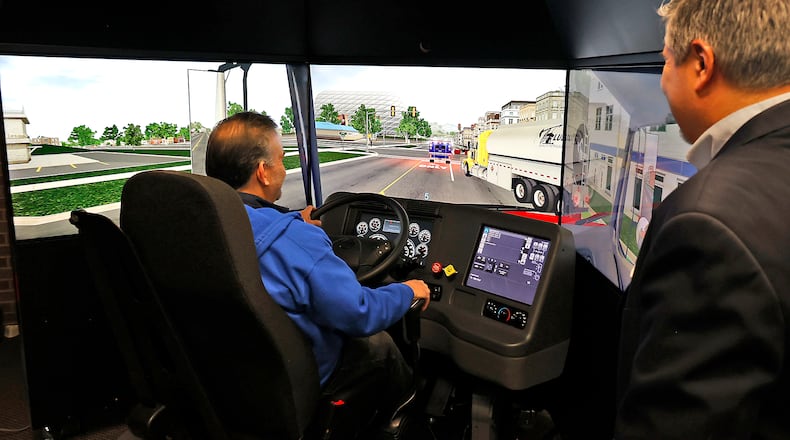The simulator, which replicates an actual cockpit of any tractor trailer, will be integrated into the program curriculums to provide students with the experience of real-world scenarios in the safe environment of the simulator, which has three screens to be immersive.
“You can do backing scenarios, highway driving scenarios, shifting scenarios. You can pick a multitude of different trucks, things of that nature, and we can also build scenarios with what we want them to do so that way we can test the safety and reactions of the students,” said William Weekley, training manager for the CDL school, operations manager and the CDL test site manager.
Weekley said the simulator can also be used for fire, EMS and police training through a different module.
The college purchased the training simulator and related software and hardware from L3Harris Driver Training Solutions.
The simulator will provide training on manual transmission for multiple types of trucks, including basic operation scenarios such as turns, intersections, space management, and shifting in rural, freeway and suburban environments.
It will also include post-incident safety training and safety refresher skills training.
Weekley said having this simulator is important to give students experience before going out on the road. Each student can learn all the requirements to safely operate a vehicle regardless of their skill level or experience. The simulator can also help reduce fear and anxiety a driver may have before ever sitting in an actual truck and save fuel and wear on the vehicles.
“We’ve just had it a short time, so I’m still kind of learning my way with it, but from the first class that we ran, these students have told me already that them getting exposed to that truck before they ever get in the real thing, it makes the learning curve a lot easier, so I think it’s real important,” he said.
Imperial Express Inc. in Springfield recruits 98% of its new drivers through Clark State’s program.
“This is critical to attracting new people to the industry who otherwise may not consider it because now they can actually try it out without trying to get in a truck out on the road. They can actually simulate the environment and see if they want to do it or not,” said owner Dale Briggs.
Briggs said he’s impressed with how realistic the simulator is with its features, like the pickup speed and stop time. The simulator will even vibrate if its operator travels off the roadway.
“It’s a great, safe place to start your training. You learn how to shift without being in an actual truck without everything else to think about and be fearful about and other traffic situations out on the road,” Briggs said. “This is a very safe environment to get that initial training and learn how to maneuver and gain that comfort level until you actually get out on the road.”
About the Author

